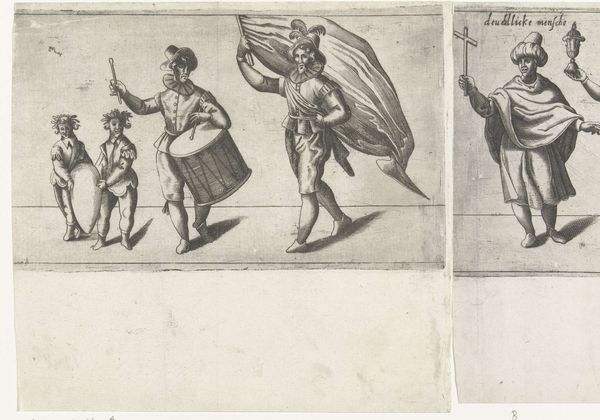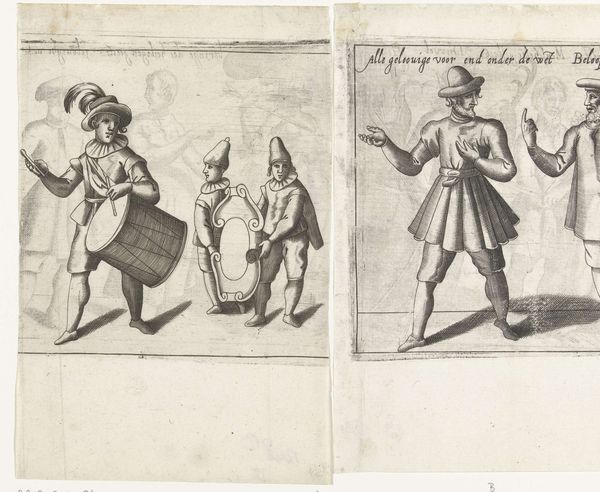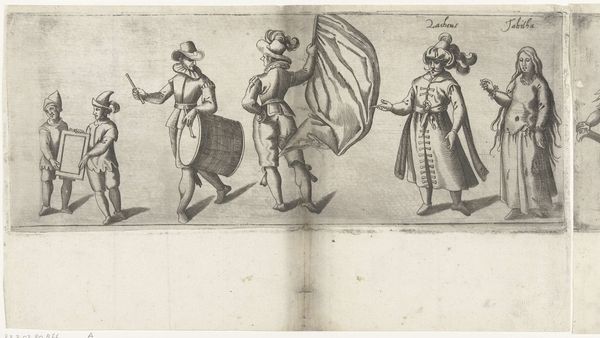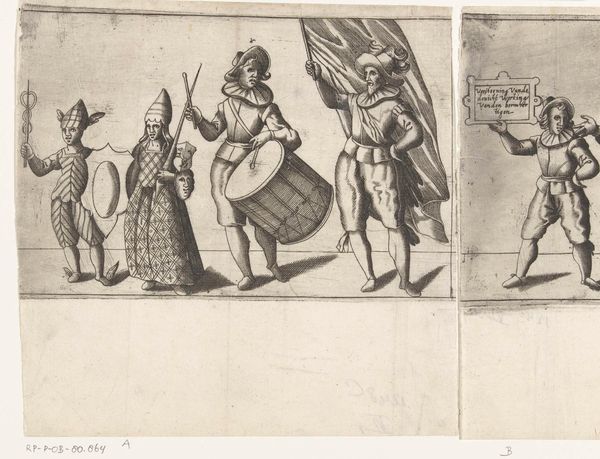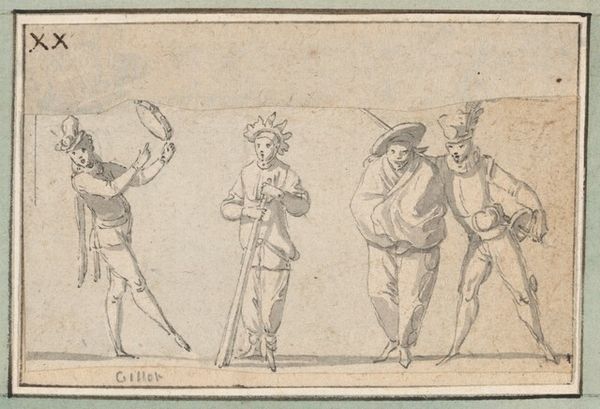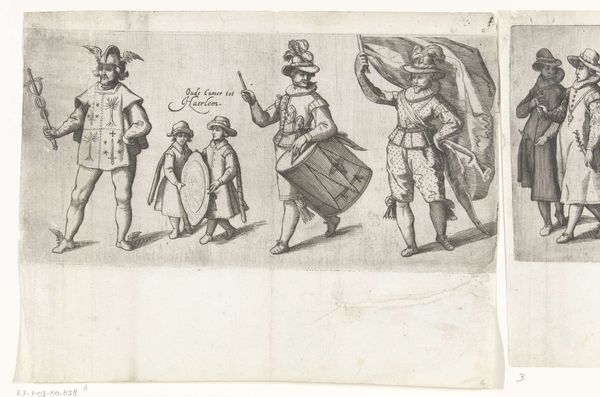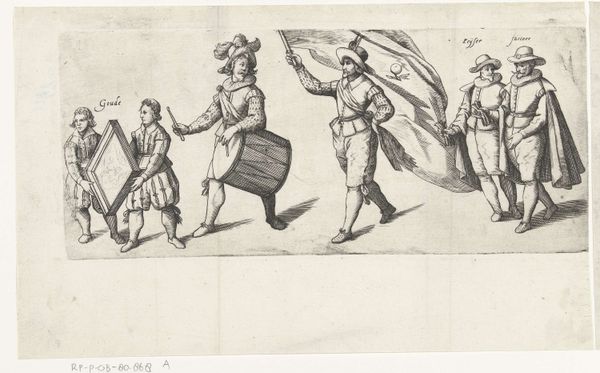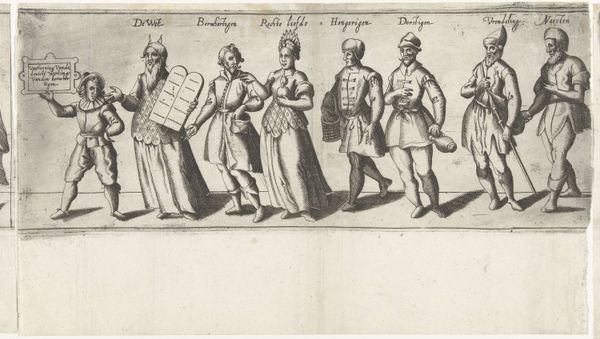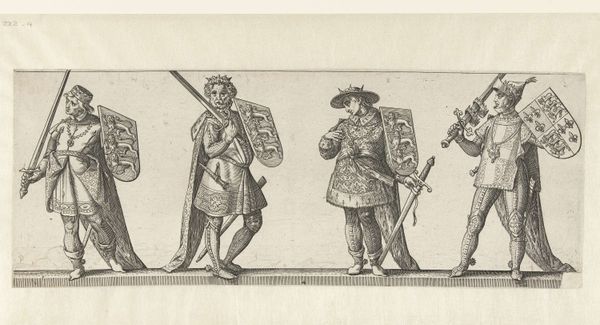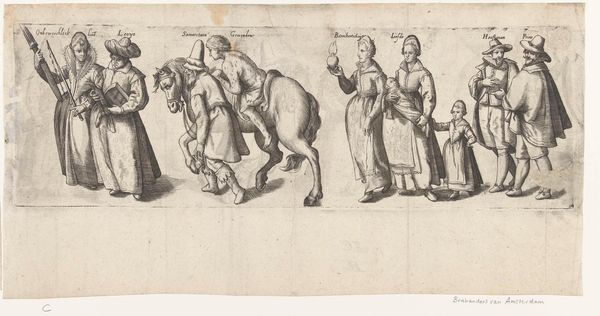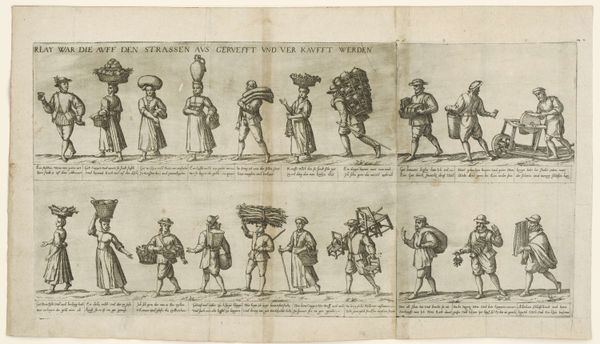
Optocht door de Vlaamse rederijkerskamer De Orange Lelie / De Witte Lelie uit Leiden (eerste deel), 1607 1607
0:00
0:00
anonymous
Rijksmuseum
print, etching
#
baroque
#
dutch-golden-age
# print
#
etching
#
figuration
#
genre-painting
#
history-painting
Dimensions: height 132 mm, width 208 mm
Copyright: Rijks Museum: Open Domain
Curator: Let's take a closer look at this fascinating print housed here at the Rijksmuseum, titled "Procession of the Flemish Chambers of Rhetoric De Orange Lelie / De Witte Lelie from Leiden (first part)," created in 1607. Editor: My first impression is that it looks a bit…fragmented, almost like scenes snipped from a longer narrative. The stark black and white, the linear details, give it a feel of reportage. Curator: Precisely. This etching gives us a glimpse into a significant cultural phenomenon of the Dutch Golden Age: the Chambers of Rhetoric. These were amateur literary societies, and this print documents their festive processions. Consider how popular theater and public spectacle played vital role in shaping communal identity. Editor: So, these processions were as much about display as they were about celebrating art? I'm drawn to the rendering of fabric – the way the engraver uses cross-hatching to create depth, especially on the flag. It's such an everyday material elevated through skill and meticulous work. What about the audience for prints like this; who was buying and consuming them? Curator: It’s likely that members of the Chambers of Rhetoric themselves, or those affiliated with the political entities supporting them, would have purchased prints like this to commemorate the event. Also, this print acted as a means of advertisement. Public performances of this kind of celebration could involve several different trades and vendors. This in itself indicates how arts such as play-writing would support local economies at the time. Editor: It makes you wonder about the lives of the artisans involved. What kind of social mobility was possible through such work? Where would they get their supplies, their patronage? Also the inclusion of musical instruments! How many craftsmen would be necessary to supply an entire event, with such rich musical support. Curator: Absolutely, this artwork encourages us to explore the network of human interaction that underpinned its production and its social function, moving past a romantic view of "high" art to consider the labour, materials, and societal factors in creating works that bolster and enrich civic life. Editor: Well said. This image does capture that blend of artistic endeavor and the nitty-gritty of getting it all made. Curator: It's always a dance between inspiration and labor.
Comments
No comments
Be the first to comment and join the conversation on the ultimate creative platform.
